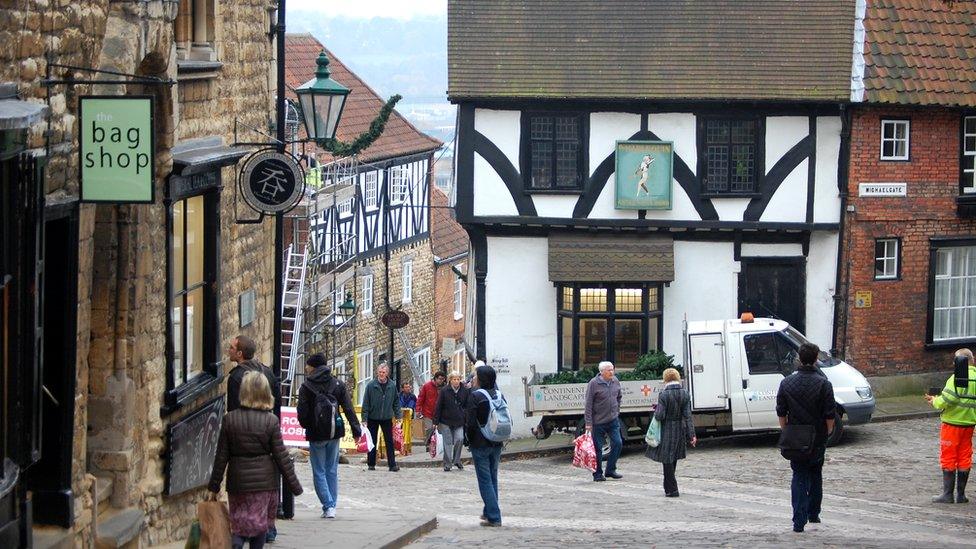Where are England's steepest streets?
- Published
Is this England's steepest street?
Where are England's steepest streets? We asked readers to name the thigh-burning inclines that fill their hearts with terror - and enlisted Ordnance Survey's help checking the gradients.
Shaftesbury, Dorset
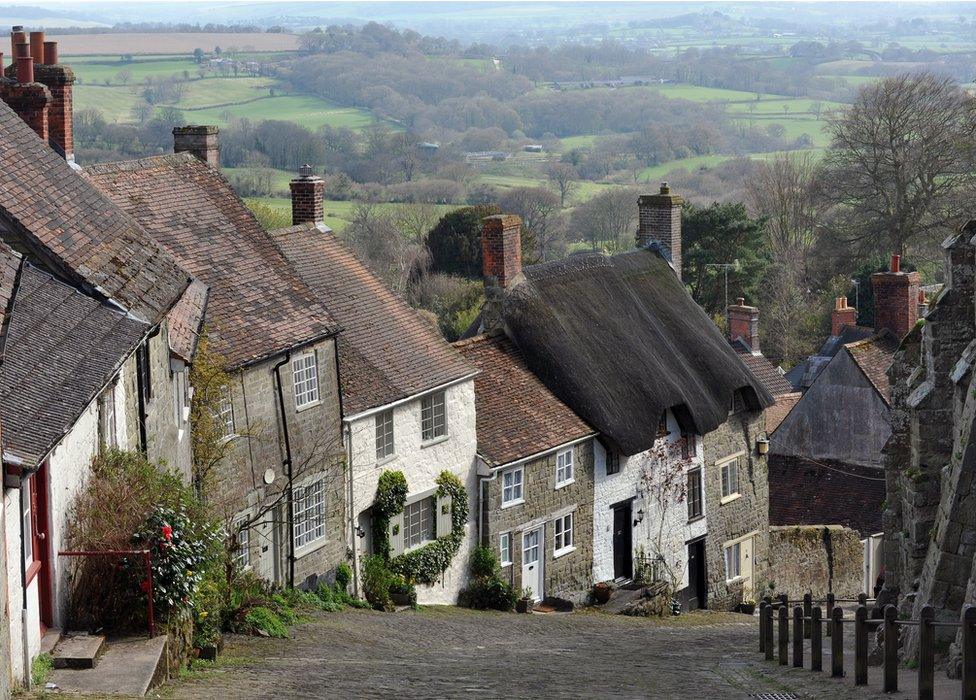
It is certainly a famous English hill but is it the steepest?
For those of a certain age, this charming cobbled climb brings back memories of 1970s television, the strains of Dvorak's New World Symphony and - of course - bread.
Gold Hill, in Shaftesbury, Dorset, is still known to many as Hovis Hill, as a result of the 1973 Ridley Scott advert, external which brought its beautiful backdrop to national attention.
With an incline of 16.09º, it certainly poses a challenge to tourists and residents alike.
Maureen Loveday, who has lived here for more than 30 years, said she believed the daily climb explained the longevity of some of her neighbours.

You might also like to read:

"I walk up it every day and it certainly helps to keep me fit," said the 68-year-old. "There are plenty of residents on the street who have lived into their 90s."
But there are some downsides: "A lady once dropped her handbag at the top after heavy snowfall and it slid right down the hill."
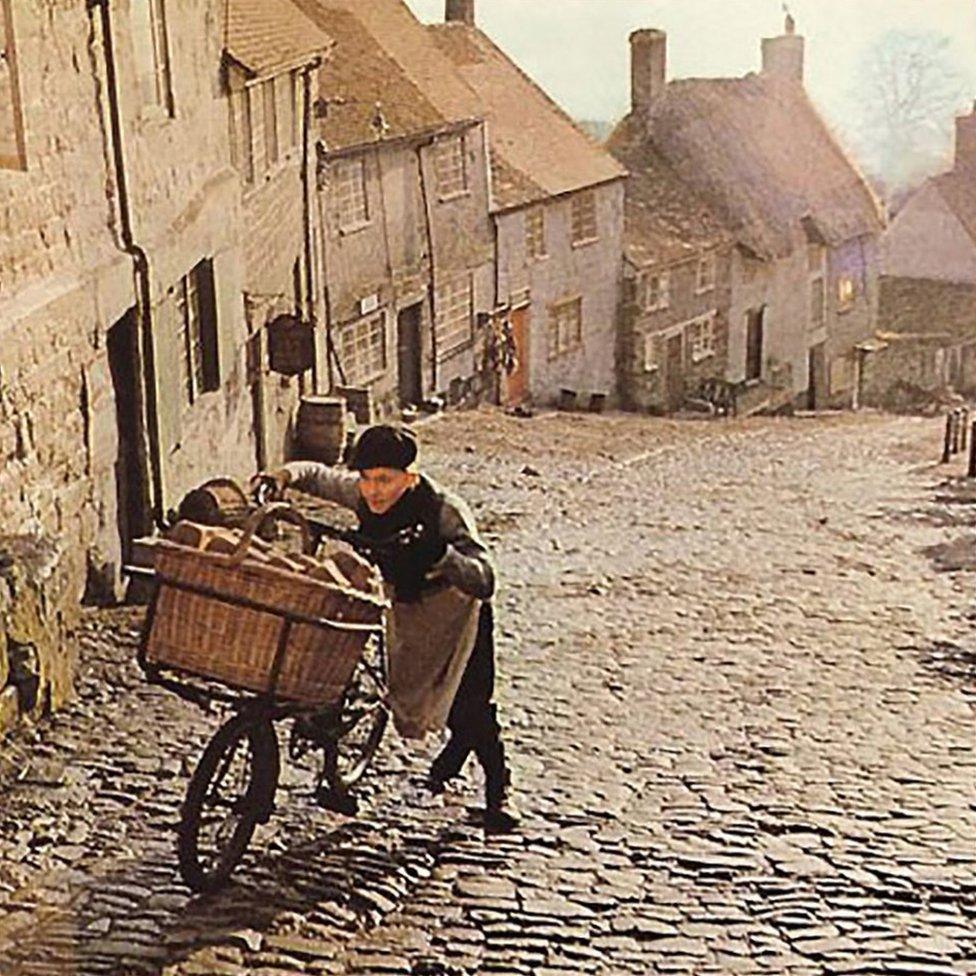
This scene from a 1973 Hovis bread advert is often mistakenly assumed to have been filmed in Yorkshire
Steeped in nostalgia, the scenic location was actually the second choice for the famous commercial, according to Janet Swiss who works at Gold Hill Museum.
"They originally wanted to use a hill in Yorkshire but they went to do some filming and it was very grey and wet and windy," she said. "They came to Gold Hill and it was bright sunshine."
Mrs Swiss weeds the cobbles twice a year and claims she finds it "quite addictive".

Lincoln
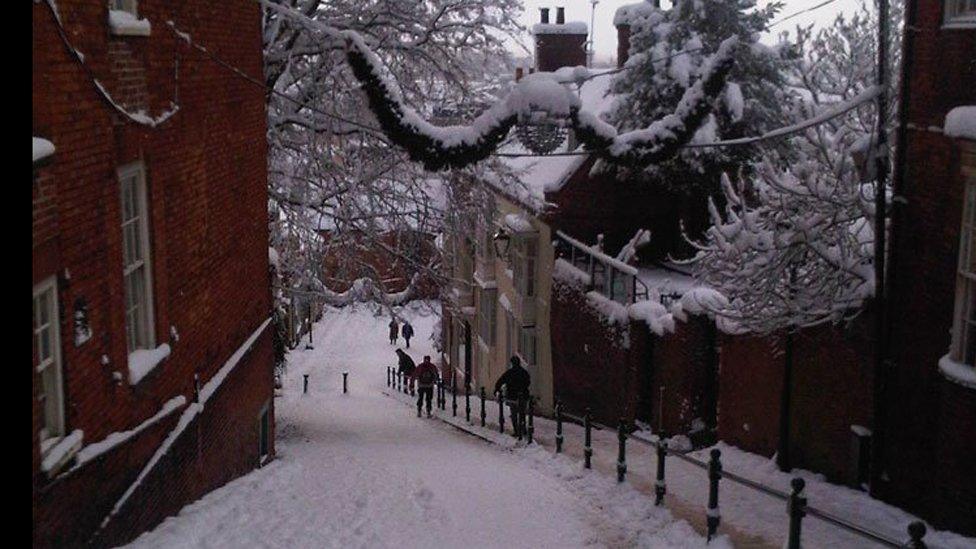
Steep Hill is particularly challenging when it's snowy
It might lack the instant recognition factor of its more glamorous counterpart, but the accurately - if unimaginatively - named passage of Steep Hill in Lincoln's medieval centre can boast an incline that - just - outstrips Gold Hill.
Its daunting 16.12º gradient does not put off the puffing tourists, many of whom meander gently past the shops, pubs and cafes on The Strait before making their handrail-assisted ascent.
Lucy Barnard, who runs a gift shop near the top, said: "Lots of people like to pop into my shop and take a breather because I'm just after the steepest part of the hill."
Of course, it's much easier going back down - particularly when there's a 100m (328ft) water slide in place.

Sheffield

Jenkin Road was renamed Cote de Jenkin during the Tour de France 2014
A 45-mile dash westwards - for the hardy, perhaps a journey to be made by bicycle - brings this steady climb up England's most daunting inclines to the city of seven hills.
We are not talking about Rome, but of course Sheffield.
Many people believe Jenkin Road - which featured in the 2014 Tour de France route - is Sheffield's steepest, but its 11.02° gradient is actually puny compared to nearby Blake Street's sinew-straining 16.6°.
The fittingly named Olivia Blake, who moved here a year ago, said she had already come to the aid of three or four people whose cars had become stuck on the snow-covered hill.
"Once a parked car rolled down the hill and into the railings on the other side," she said.
This street's greatest claim to fame is its appearance in the 1997 film The Full Monty, where the striptease act members walk up the hill in search of a choreographer.

The coolest strip of Sheffield? Blake Street featured in the popular film comedy The Full Monty
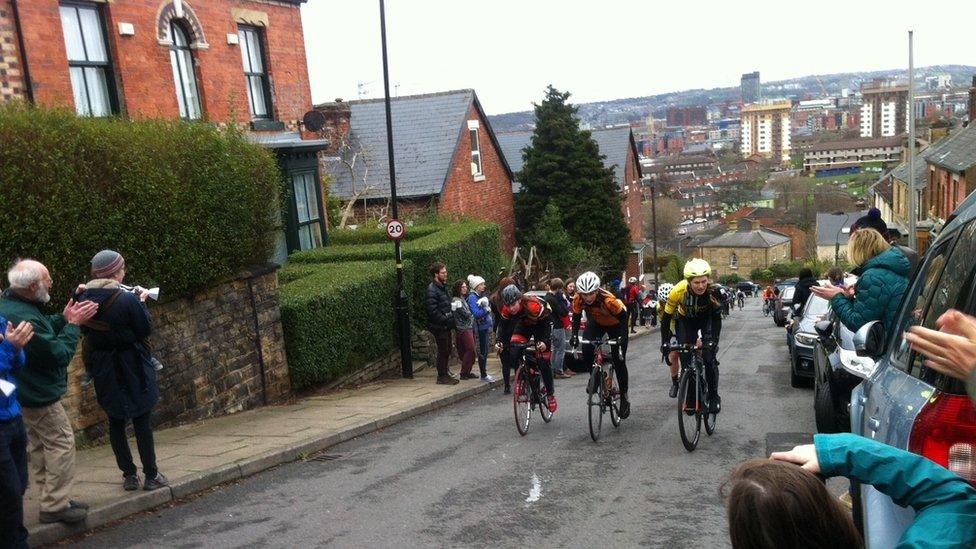
It's also a tough challenge for cyclists

Great Malvern, Worcestershire
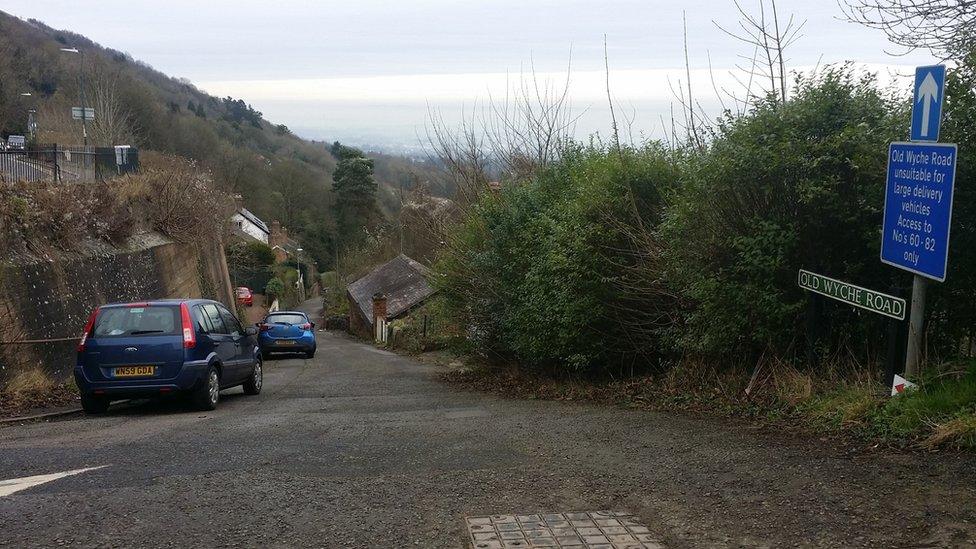
Old Wyche Road boasts fine views of the Malvern Hills
But the streets of Sheffield have nothing on our next stop, the first of these terrifying hills to break through the vertigo-inducing 17º barrier.
The precipitous Old Wyche Road climbs up the eastern slopes of the Malvern Hills to the Wyche Cutting - a winding path thought to have once formed part of an Iron Age salt route.
It's claimed locally that to the east the next highest hills are the Urals in Russia, and these are blamed for the cold winds that sometimes whistle through the trees.
Sarah Smith, 42, has lived here on this 17.54º slope for eight years and says she feels "very lucky".
"We've got fantastic views of all the Malvern Hills and valleys. It doesn't matter how often you walk up this hill, it's always tiring.
"You've got to make sure you've got a good handbrake.
"In the snow we come down here in our sledges which you can get quite fast at. You've earned a pint when you get to the top."

Bristol
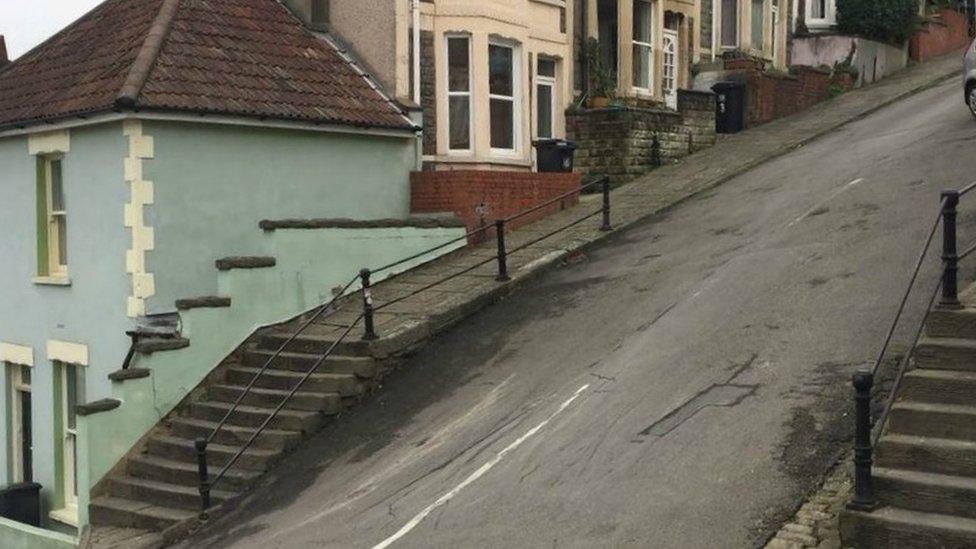
The daddy of them all - Vale Street in Bristol
But the most lung-bursting of these English slopes is to be found down the M5, in Bristol's aptly named Totterdown district.
The inhabitants of Vale Street, who have a near 22º gradient to contend with, have every right to look down on the competition.
Helen Loney, who has lived here for 15 years, said it was "most famous" for its Easter Sunday egg-rolling contest.
"There's quite a large crowd that stand and throw hard-boiled eggs down the hill," she said. "It's always competitive and really good fun."
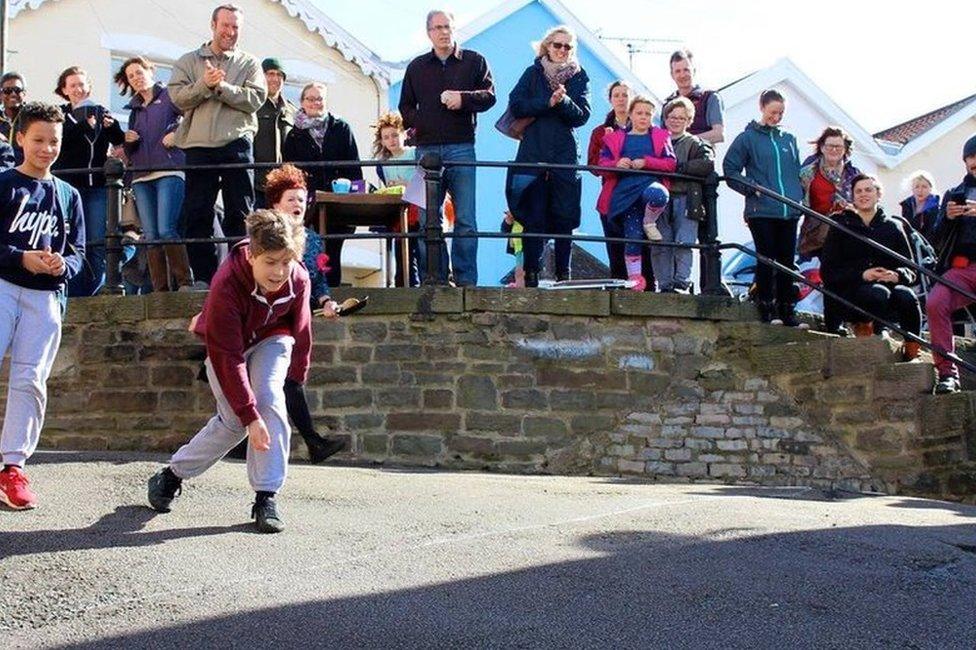
Egg rolling is a tradition that takes place every Easter Sunday on Vale Street in Bristol

The egg-rolling contest in 2009
But the spring in her step disappears in the height of winter. "Snow is a right pain," said Mrs Loney. "If you leave your car on the hill it's stuck there until the snow goes."
She said the slope, which has steps and handrails at the bottom and top, had attracted a few daredevils.
"Up and down we've had skiers, we had a unicyclist, lots of runners come and train here.
"Pushing a double buggy up was a bit tricky for me but I've never been so fit in my life."

The science bit
This story was inspired by nominations from BBC News Online readers. We asked Ordnance Survey to work out the steepest gradients for the top five most frequently suggested hills.
Andy Steggall at OS said: "We selected each road from our blueprint map of Great Britain, from which the OS maps and digital data are derived.
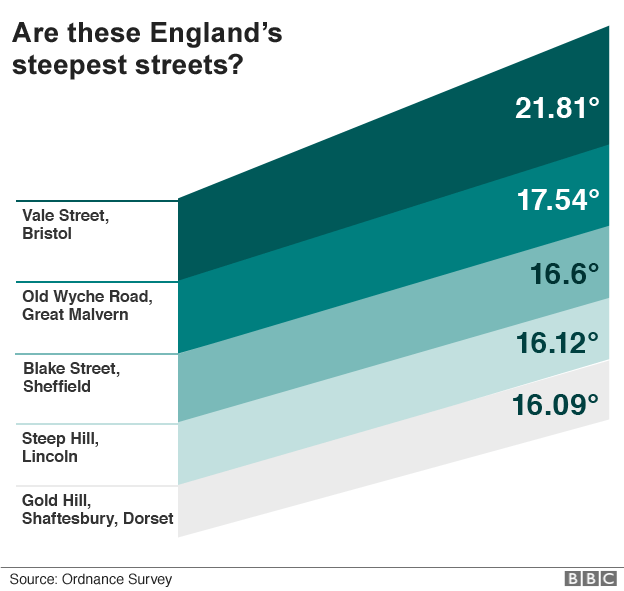
"The calculation first involved defining the steepest section of the road, then cutting it in to 5m chunks, then applying more software to interpret the maximum and average slope data from the grid for each 5m piece of road.
"Then the results have been put back together and summarised to give the average slope across the length of each road."

Additional reporting by Sue Paz, Jerry Chester, Grace Parnell and David McKenna.
- Published2 January 2017
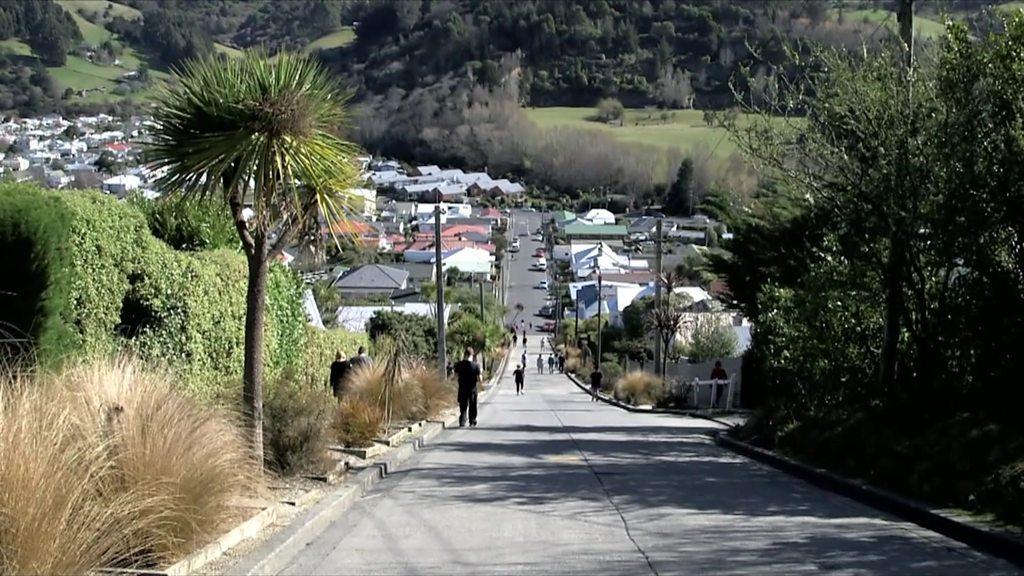
- Published10 January 2017

- Published25 April 2016
